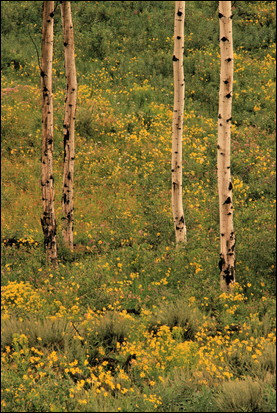 Be sure to consider the location of trees to be planted as well as the spacing between them. |
The landscape effect of a grove of young trees is like a lovely woodland. It is especially beautiful when the late afternoon sun shines low under the leaves, through multiple trunks. When a clump of trees is young, a decision must be made whether to keep them as a grove or to remove all but a very few, well-spaces trees.
If someone wants to to open up and clear a forested area, the best trees, such as tall or young ones, are preserved. Trees to be removed are those with basal decay or open splits, as well as dead stubs. Dead or dangerously low branches and unsightly branch stubs are also removed. Lower branches that block the view can be removed, so it be possible to see through the forest.
Self-seeded trees, especially maple, oak, cherry and poplar often grow close together on the borders of property, near stone walls and in wild areas and so have to be thinned. When trees grow too close together, they crowd each other out and don’t grow well. The way to deal with such saplings is to remove the poor ones that crowd out the more vigorous specimens. They may be pruned to a single trunk or multistemmed clumps. This thinning and shaping is usually done over a period of years.
Unfortunately the poplars, which grow fast in any soil, are weak-wooded, short-lived trees, unsuited to residential use. The beautiful Lombardy poplar is the fastest growing columnar tree there is. Sadly, it gets a fatal canker disease just as it reaches maturity at about twenty years. All poplars, willows, and maples have roots that clog water and sewer pipes, so don’t plant them near the pipes between house and street.
Credit: www.mothersgarden.net




























